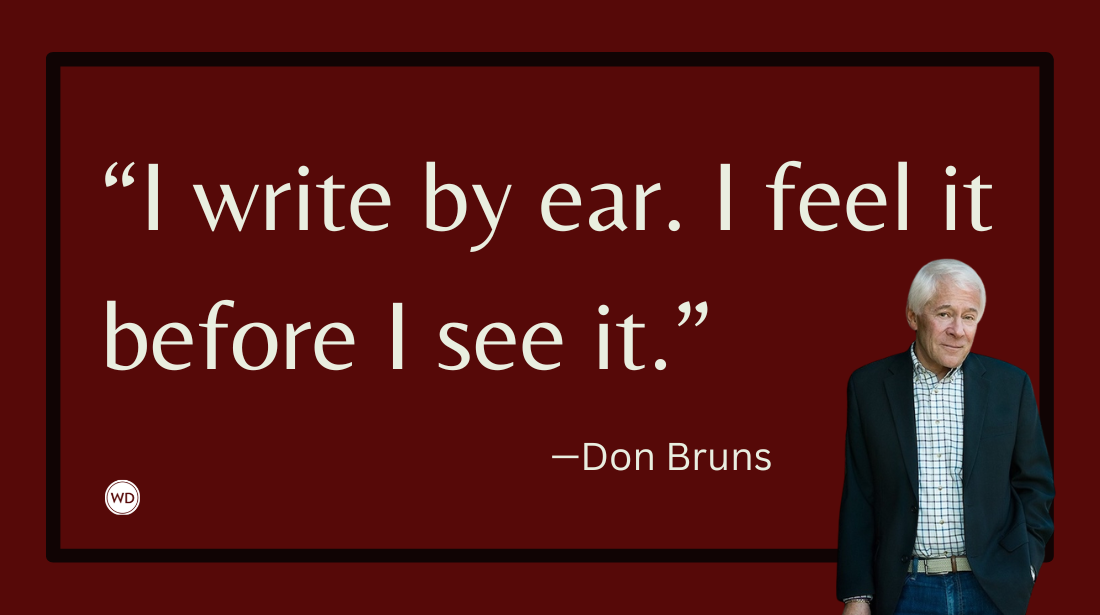3 Tips for Creating and Managing a Large Cast of Characters
Author Holly M. Wendt shares their top three tips for creating and managing a large cast of characters in a work of fiction.
One of the great pleasures of writing a novel is meeting the characters who will inhabit it, whether they leap from the imagination fully formed or are excavated as we unearth the story. Sometimes, though, the very premise of a project demands a large cast of developed characters—novels involving teams, crews, or extensive staff; novels hinging on the dynamics of a remote village, lunar settlement, or entire neighborhood—and we have to balance the ebullient creativity of inventing such a cast with the procedural precision of keeping said characters organized.
For my debut novel Heading North, in which a queer, closeted hockey player rebuilds his life in the NHL after losing his clandestine boyfriend and former team in a catastrophic plane crash, I needed two complete professional ice hockey teams, their staffs and team employees, family members for multiple characters, and additional personalities around the league, at a minimum. Spreadsheets became my new best friend.
Embrace the spreadsheet as a generative tool
At the simplest level in a large-cast project, a spreadsheet is a place to chart out what characters we need and how many, so we can then create characters and identities to fill those roles. In Heading North, for example, I needed at least 23 players per team (the size of an NHL roster): eight defensemen, 13 forwards, and two goalies. Separating those characters across spreadsheet tabs by category (Team 1 and Team 2, dayshift and nightshift, the Capulets and the Montagues, etc.) makes quick work of remembering who belongs with whom, and creating column headings to track everyone’s names, ages, physical attributes, and so on groups information for easy reference as we draft.
Not only did I need to keep track of multiple teams of characters, they needed to be a mixture of left- and right-handed shots, of different skill types and specialties, and of different nationalities and experience levels—not to mention their appearances and personalities—in order to effectively evoke a real team. As an organizational tool, the spreadsheet also helped me identify the gaps in my teams, and to generate characters to fill them.
The spreadsheet also can offer even more generative possibilities: What if we put the big questions we ask of our main characters—what they want, what they love, what they fear—in the column headings and answer them for everyone? We can generate fullness for each person, even if those answers never explicitly appear on the page. Our understanding as writers will infuse those characters’ scenes with richness and help us find the right actions and reactions as the narrative progresses.
Check out Holly M. Wendt's Heading North here:
(WD uses affiliate links)
Use all the information we have for specificity and differentiation
One of the difficulties we have to manage when we have a large cast is differentiation: How do we ensure our characters don’t blend into some generic sea of humanity? After all, if we intended to simply write a faceless crowd, we would do that.
The answer is that we should use all the information we have made available to ourselves. This is especially true of the physical truths of our characters, as that will help us both distinguish characters from each other and infuse the work with particularity and verisimilitude. For example, any character might sigh and slump into a chair, but the broad, 55-year-old station mechanic with a tetchy back might ease into the seat, both hands braced on the arms, both feet firmly on the floor. His petite 26-year-old assistant might sit with her legs folded under her to better reach the controls and to keep her eye level the same as his.
In Heading North, keeping each character’s physical truths in mind—and in conversation with what each one wants—helped me populate the ice and the dressing room with individuals. My 6’8” closeted protagonist Viktor wants only to disappear when he’s off the ice but is desperate to make an impact on it; this contrast in bearing and desire changes the way he moves through the various parts of his world.
Ask unexpected questions about your characters
Identify the central circumstance of your large-cast novel. This is probably some combination of the primary setting and plot, such as the protagonist’s new restaurant, a beleaguered space station, or a struggling hockey team. Then, play a game of “what if” with the novel characters who aren’t specifically tied to that central circumstance.
For example, while it’s very easy to envision the protagonist/chef de cuisine and her role in her restaurant, what happens if we imagine her highly anxious mother, who is an electrician, in a restaurant role? Imagined in that way—just as an exercise, not a career change inside the book—what characteristics does the anxious electrician offer that could be strengths or weaknesses in the restaurant? What parts of the environment would she love or hate? The answers to those questions could shed new light on the character, as well as her chef daughter’s way of thinking about her. The “what if” game might even open up our thinking about the restaurant itself.
When I played this game with Heading North, I kept imagining Liliya Aleyev, the league’s first female General Manager, as a player on the ice. Though she has no athletic history of her own, I could not help but imagine her as a goalie, always trying to read the game from her fixed position, always anticipating in rapidly evolving circumstances. Put in a constant defensive stance, expecting constant attacks—this shows in her relationship with her father and the people who have, throughout her whole career, questioned her competence. It helped me understand the way she bears the burden of failure, which gives her more in common with her players than I—or she—expected.
Working with a large cast of characters for your novel might feel intimidating, but it’s ultimately a process for writers to revel in. By using a few tools for organization and differentiation and practicing some open, generative thinking about everyone who is going to appear on the page, we’ll create a cast that’s memorable, manageable, and meaningful.
Holly M. Wendt is the author of Heading North (Braddock Avenue Books, 2023). They are a recipient of the Robert and Charlotte Baron Fellowship for Creative and Performing Artists from the American Antiquarian Society and fellowships from the Jentel Foundation and Hambidge Center. Their work has appeared in Passages North, Shenandoah, Barrelhouse, Memorious, and elsewhere. Holly is a former Baseball Prospectus contributor and contributing editor for The Classical. Their nonfiction has appeared in Bodies Built for Game: The Prairie Schooner Anthology of Contemporary Sports Writing, The Rumpus, and Sport Literate. Holly is Associate Professor of English and Creative Writing at Lebanon Valley College. (Photo credit: William Zeiders)









